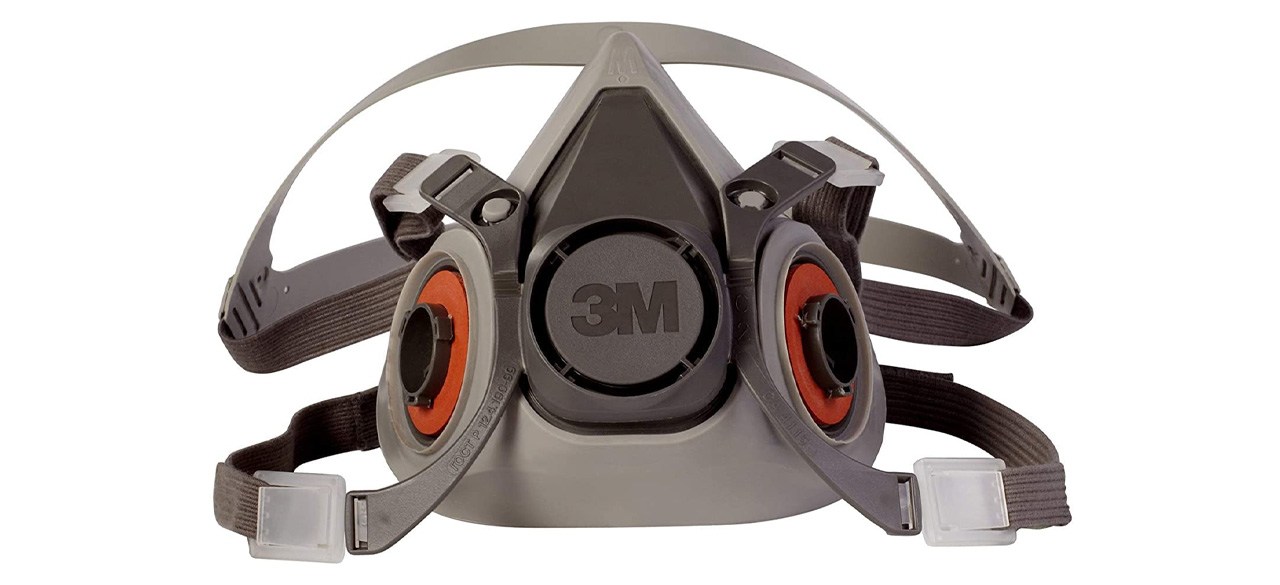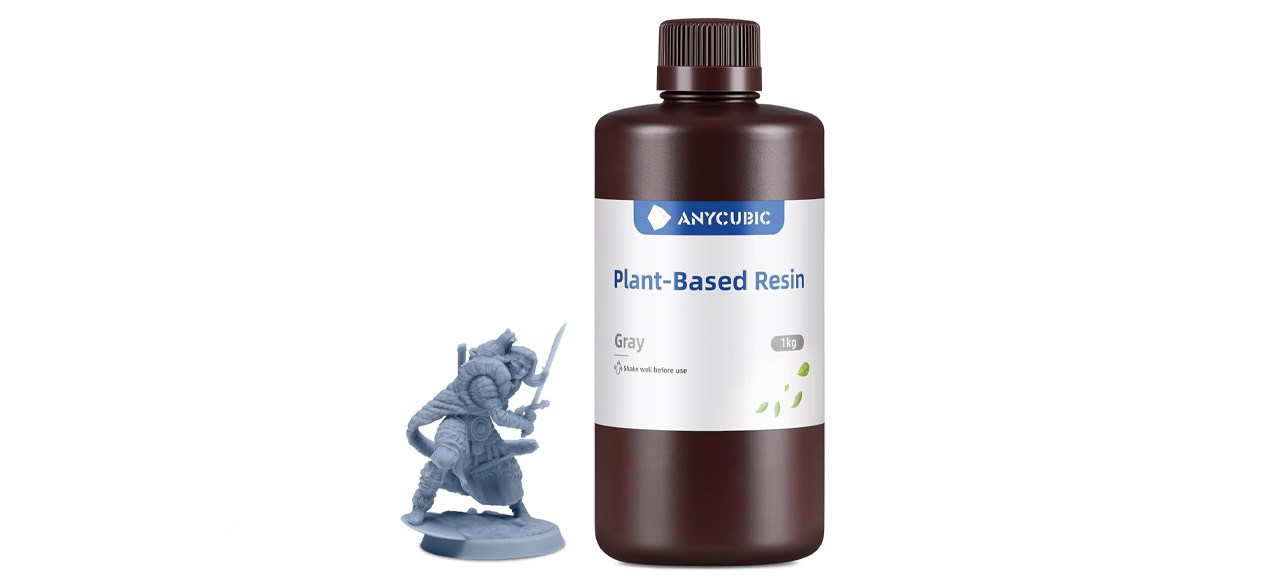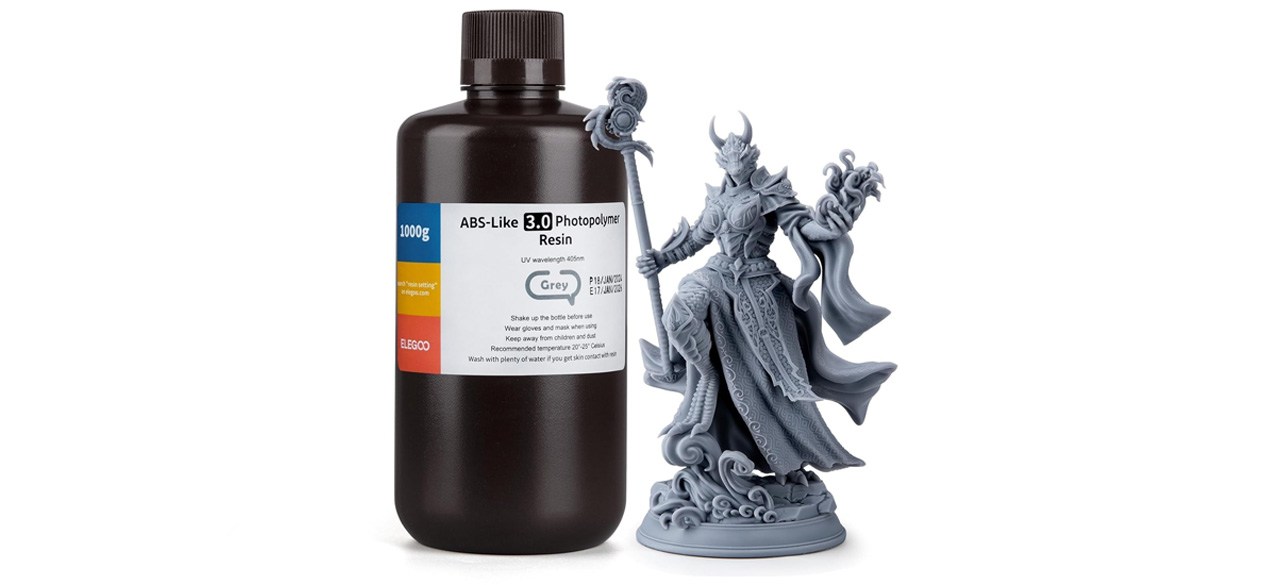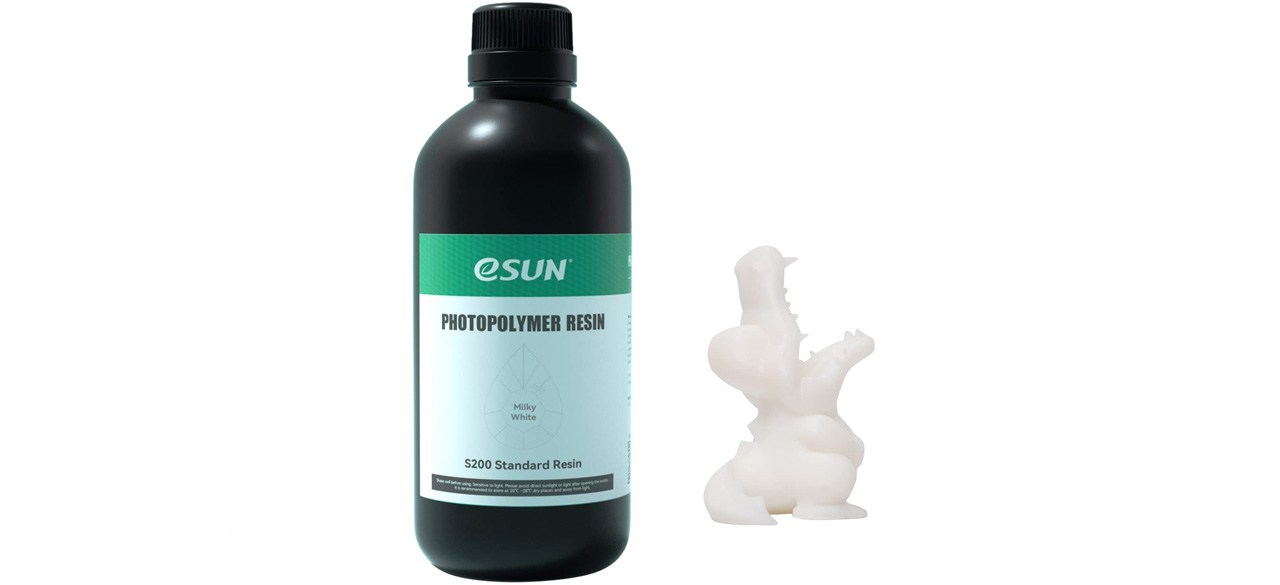Print with precision using the best 3D printing liquids
Which 3D printing liquid is best?
3D printing is an easy-to-learn hobby thanks to new technologies becoming more affordable. These printers give you the ability to create almost any three-dimensional object out of thin air. From modern lighting designs to decorative figurines, this unique process lets your creativity soar.
The material used in these printers is known as 3D printing liquid or resin. Your printer uses either lasers or LCDs to form the resin into the shape of your choice and once completed, it cures under UV light to become a hardened object.
There are many different types of 3D printing liquids. One of the best is the eco-friendly, biodegradable Anycubic Plant-Based UV Resin.
What to know before you buy 3D printing liquid
Types of liquid
There are a handful of different types of resins that are used for 3D printing. Choosing which type of liquid to use should be based on what object you are printing. The standard type of 3D printing liquid is the most cost-efficient. However, it is less durable than other types, which makes it better for objects that won’t be used practically. Conversely, there is a durable, tough and rigid liquid that provides more stability than the standard version. There is also a heat-resistant 3D printing liquid that’s designed to withstand higher temperatures and features a smooth finish. Finally, there’s flexible liquid. This type falls somewhere between rubber and plastic in its final form. While it’s more malleable, it will degrade, making it best for products that aren’t meant to last long.
Color vs. clear
Depending on what object you’re creating with your 3D printer, you’ll either want a colored resin or a clear resin. Colored liquids are a single uniform color. This is best for objects that you aren’t looking to alter after they are completed. However, using a clear resin will allow you to paint the product once it’s fully cured. These liquids tend to cost more than color varieties.
Accessories

Safety is important when it comes to 3D printing best practices. Using proper safety equipment will limit your risk of exposure to harmful chemicals and high temperatures. Nitrile gloves are great for protecting your hands while you’re handling resins. Look for ones that are puncture- and chemical-resistant for maximum protection. Similarly, safety glasses are useful to keep any unwanted debris out of your eyes. You should also wear a respirator mask made of high-quality rubber. These masks work to prevent any harmful fumes that may come from certain types of 3D printing liquid.
What to look for in a quality 3D printing liquid
Durability
For objects like pieces of art or figurines that will sit on a shelf, durability isn’t much of a concern. However, it’s super important when it comes to creating three-dimensional objects that you’ll actually use. This is especially true if you’re making practical everyday items like chip clips, cup holders or bottle openers. Polycarbonate is the strongest type of liquid available. This resin is very durable, impact-resistant and can stand the test of time. One experiment showed that a hook made of polycarbonate resin was able to hold a 285-pound object without breaking.
Odor
Smell can be a concern for certain types of 3D printing liquids. One particular liquid that emits a foul odor is Acrylonitrile Butadiene Styrene (ABS). While you should be wearing a protective mask while you’re printing, the leftover emissions from ABS objects can still be harmful and smelly after the product cures. Polylactic Acid (PLA) is on the other end of the spectrum. This liquid is known to be odorless and biodegradable. Although not as strong as ABS, this liquid is easy to use, which makes it great for beginners in the 3D printing world.
Detail
The level of detail you get in a finished print depends on the type of liquid you use. It’s no surprise that liquids that offer the highest level of detail will cost the most money. The more intricate the object, the more detail you’ll want. For example, printing a solid block for a paperweight shouldn’t require too much detail. Before forking out the money for an expensive resin, keep in mind that you’ll need a 3D printer that is capable of outputting the same level of detail. Otherwise, the expensive liquid you bought won’t be able to live up to your expectations.
How much you can expect to spend on 3D printing liquid
3D printing liquids can cost anywhere from $19-$40, depending on the type, sizing, and quality.
3D printing liquid FAQ
What sizes do 3D printing liquids come in?
A. Different projects require different amounts of resin. Generally, 3D printing liquids come in containers of 500 grams and 1000 grams (1 kilogram). If you’re following a project’s instructions online, be sure to double-check how much liquid you’ll need before ordering resin.
How can I find objects to print?
A. Many websites have free downloadable 3D prints called STLs (stereolithography). These files are the design specifications for the printable object. Using your 3D printer’s program, you can upload the STL file, follow the instructions and out comes the object.
What’s the best 3D printing liquid to buy?
Top 3D printing liquid

Anycubic Plant-Based UV Resin
What you need to know: This 3D printer resin from Anycubic is ideal for those seeking a low-maintenance liquid that doesn’t emit a bad smell or contain dangerous irritants.
What you’ll love: This biodegradable liquid is made from soybean oil and comes in a variety of vivid colors. It’s also compatible with most 3D printers.
What you should consider: This printing liquid isn’t the most durable, making it best for models or industrial prototypes.
Top 3D printing liquid for the money

ELEGOO ABS-Like 3D Printer Resin 3.0
What you need to know: This is a versatile resin that can take on any shape your printer can design.
What you’ll love: The ELEGOO liquid comes in a wide variety of colors, including mint and smoky black. There are also transparent options, which are great if you want to paint your objects after curing.
What you should consider: Be mindful that this liquid can sometimes darken once it’s put under a UV light.
Worth checking out

eSUN Standard Photopolymer Resin
What you need to know: This excellent general-purpose liquid is known to reliably print any object and is compatible with most 3D printers.
What you’ll love: The eSUN resin has a low failure rate, meaning most users can achieve exactly what they want from every project. The bottles also feature a spill-proof cap, so you don’t have to worry about dirtying up your workplace.
What you should consider: Some users have reported that the colors can fade after the drying process.
Prices listed reflect time and date of publication and are subject to change.
Check out our Daily Deals for the best products at the best prices and sign up here to receive the BestReviews weekly newsletter full of shopping inspo and sales.
BestReviews spends thousands of hours researching, analyzing and testing products to recommend the best picks for most consumers. BestReviews and its newspaper partners may earn a commission if you purchase a product through one of our links.
